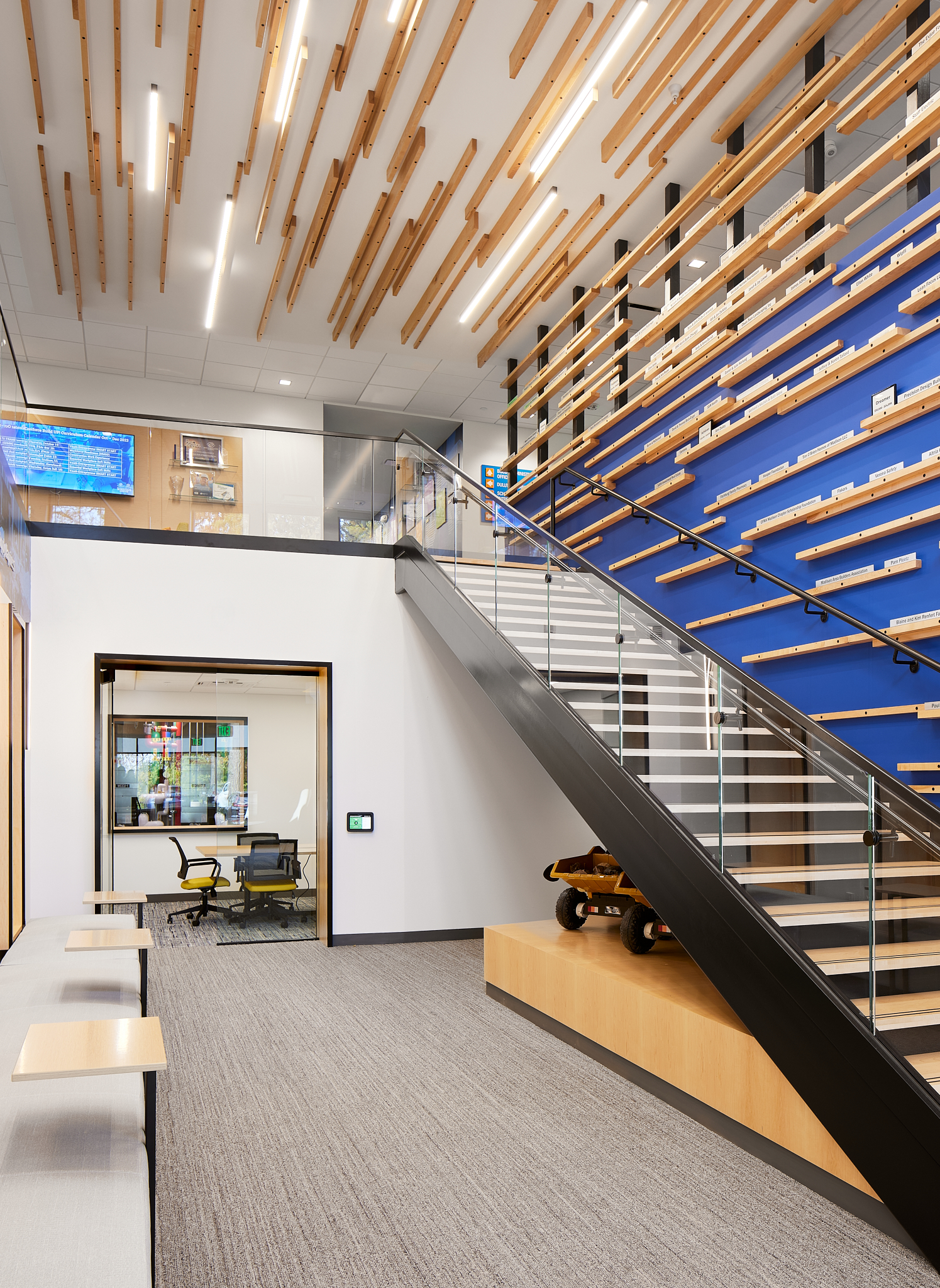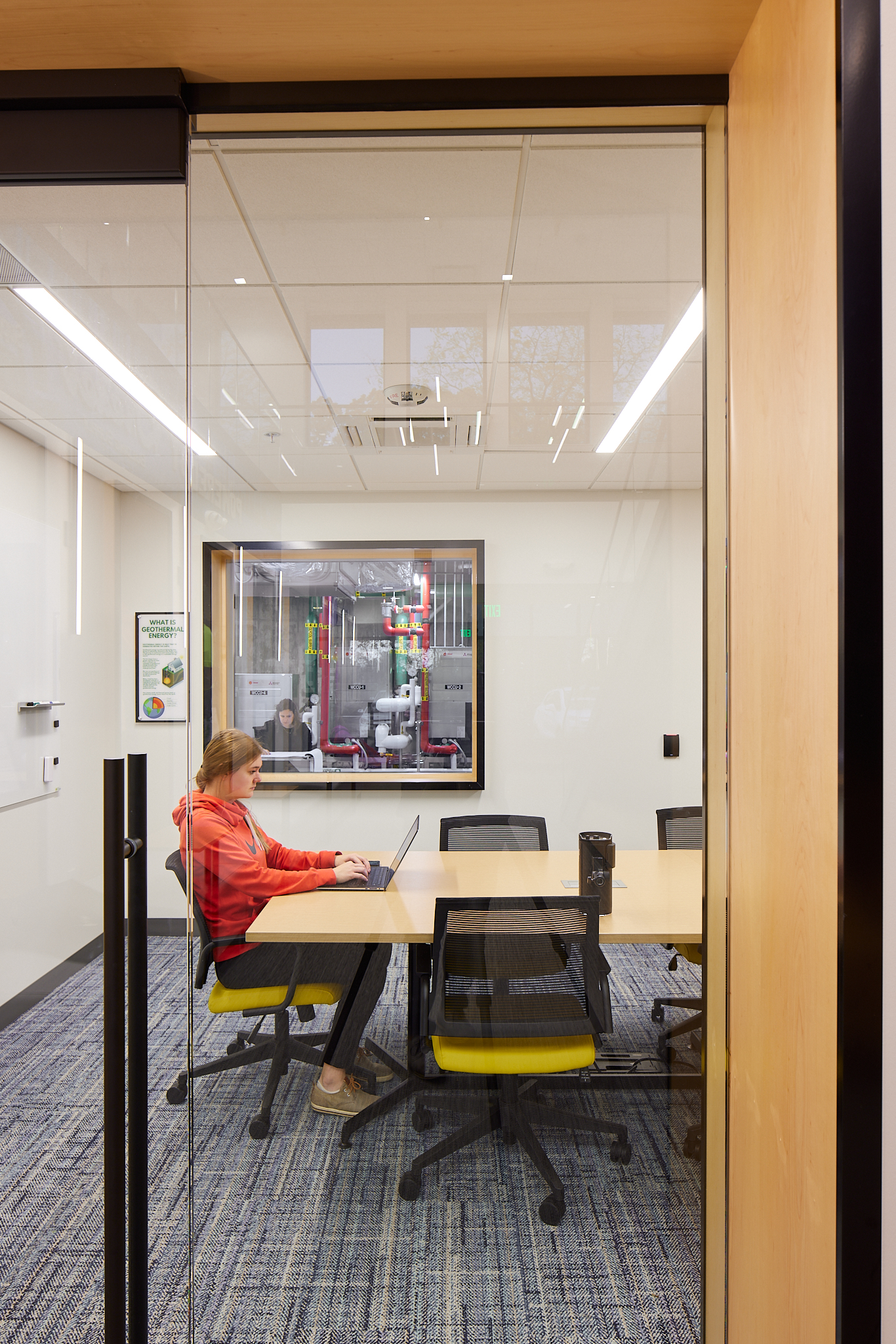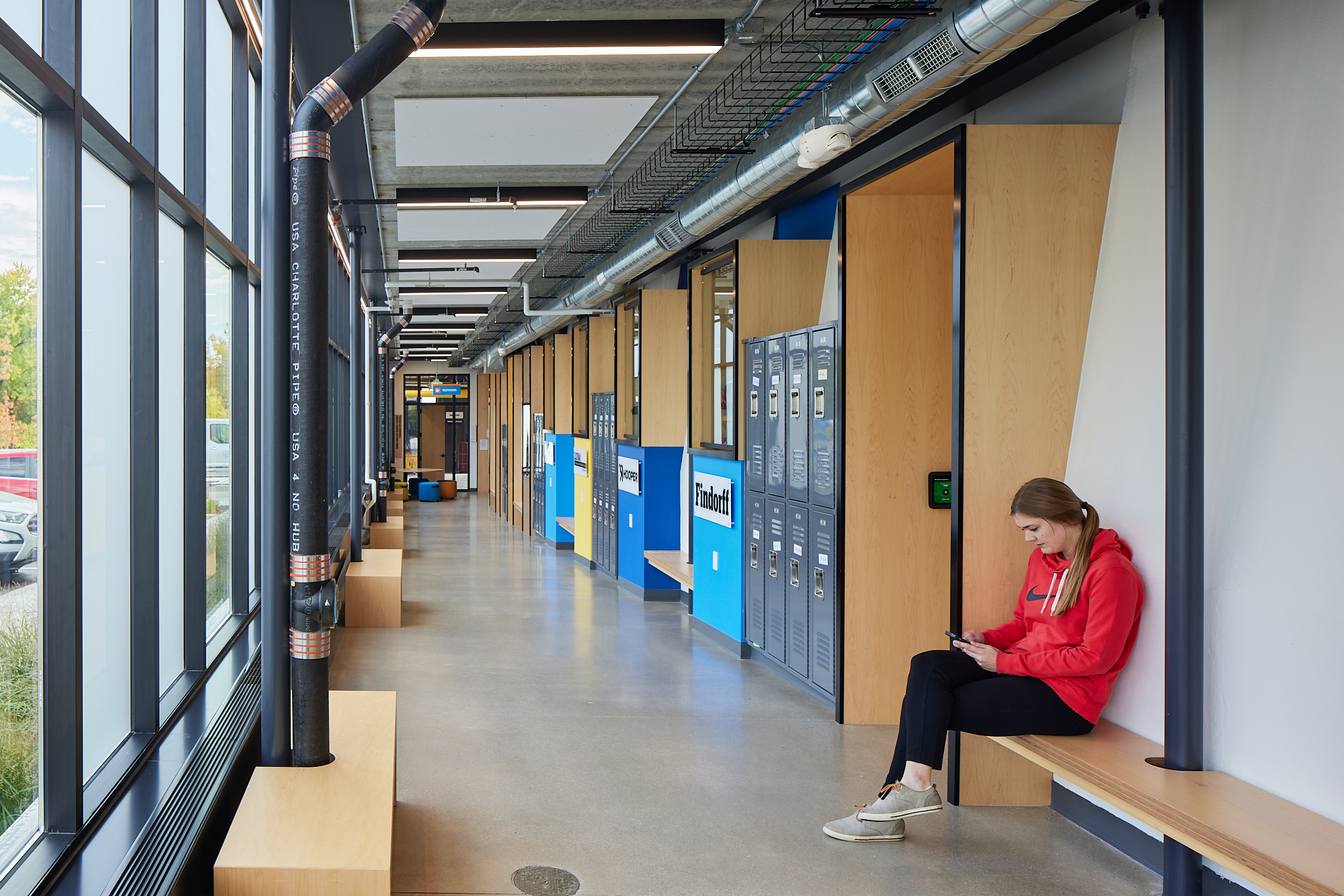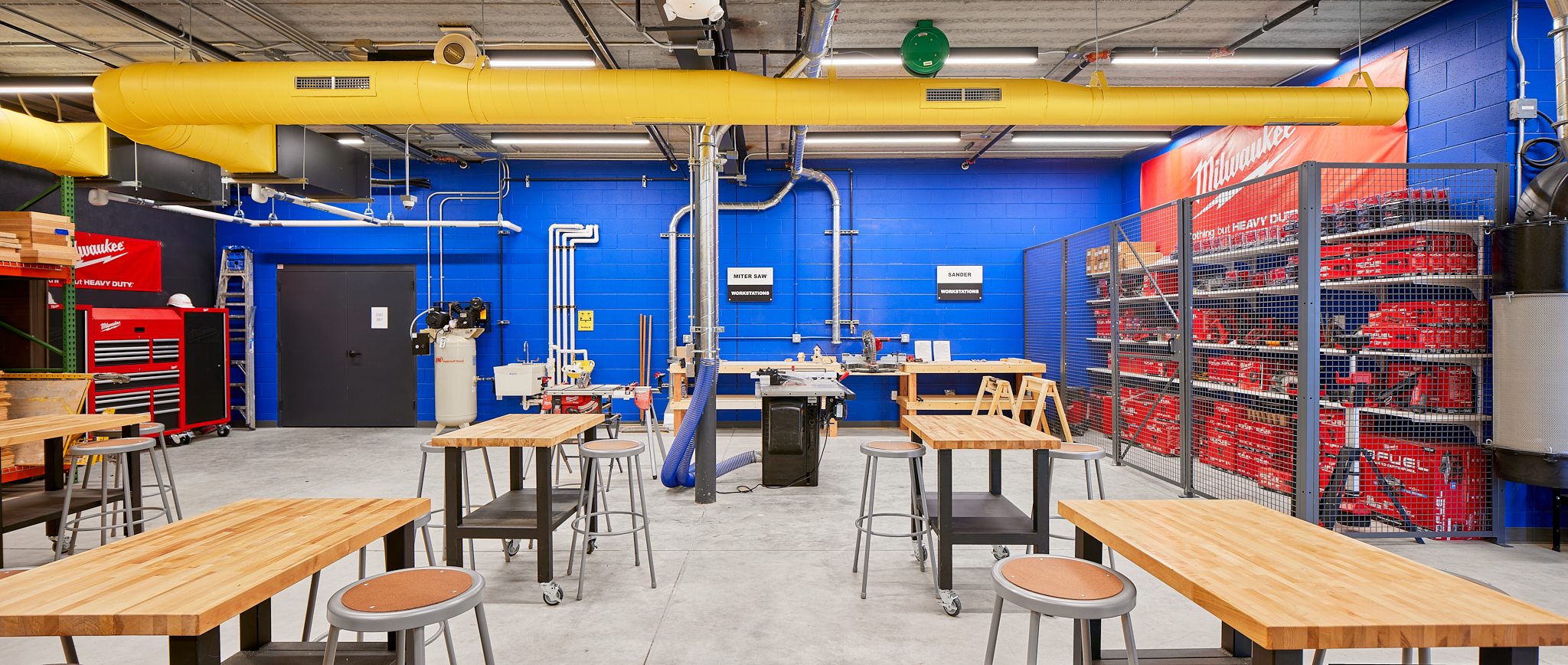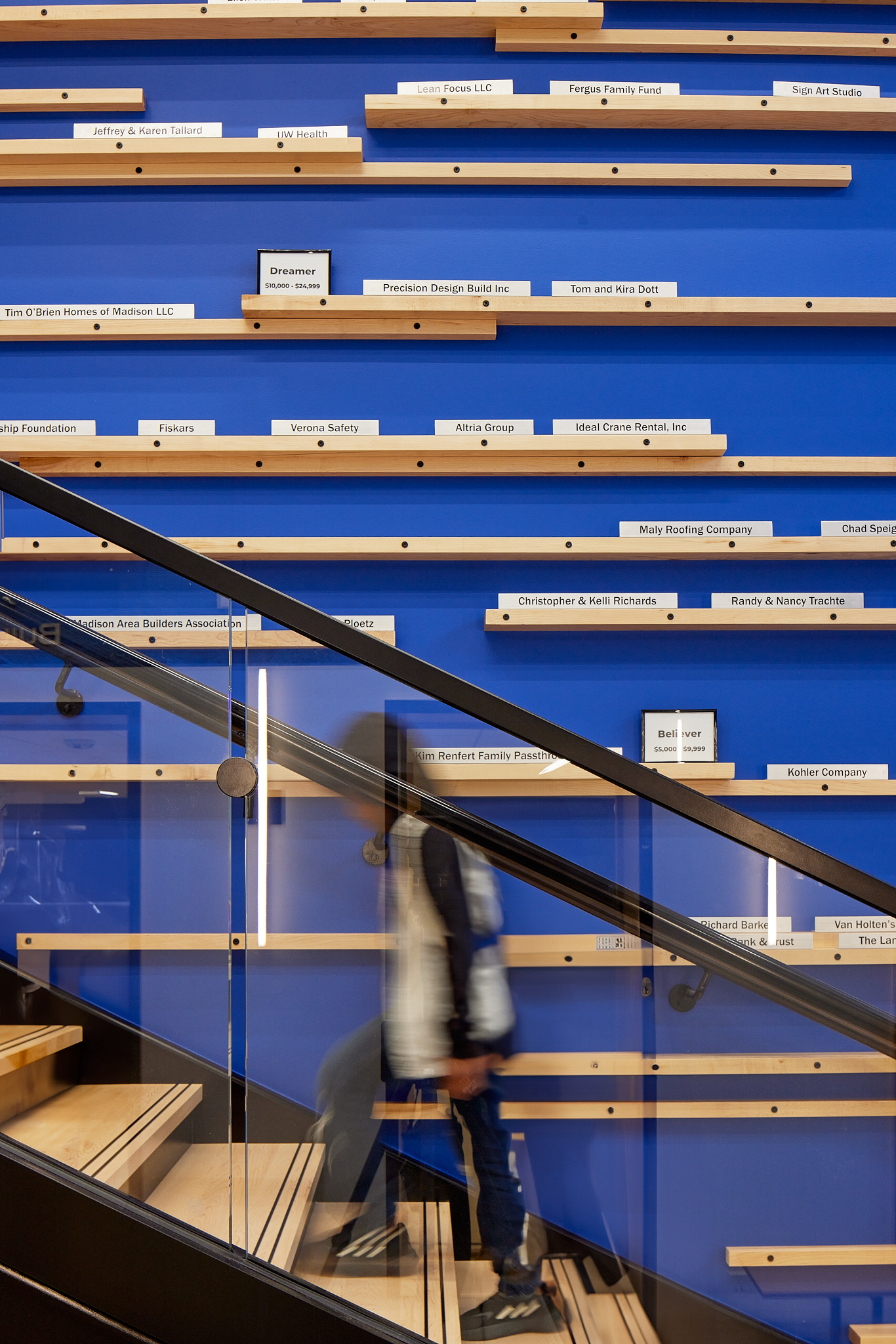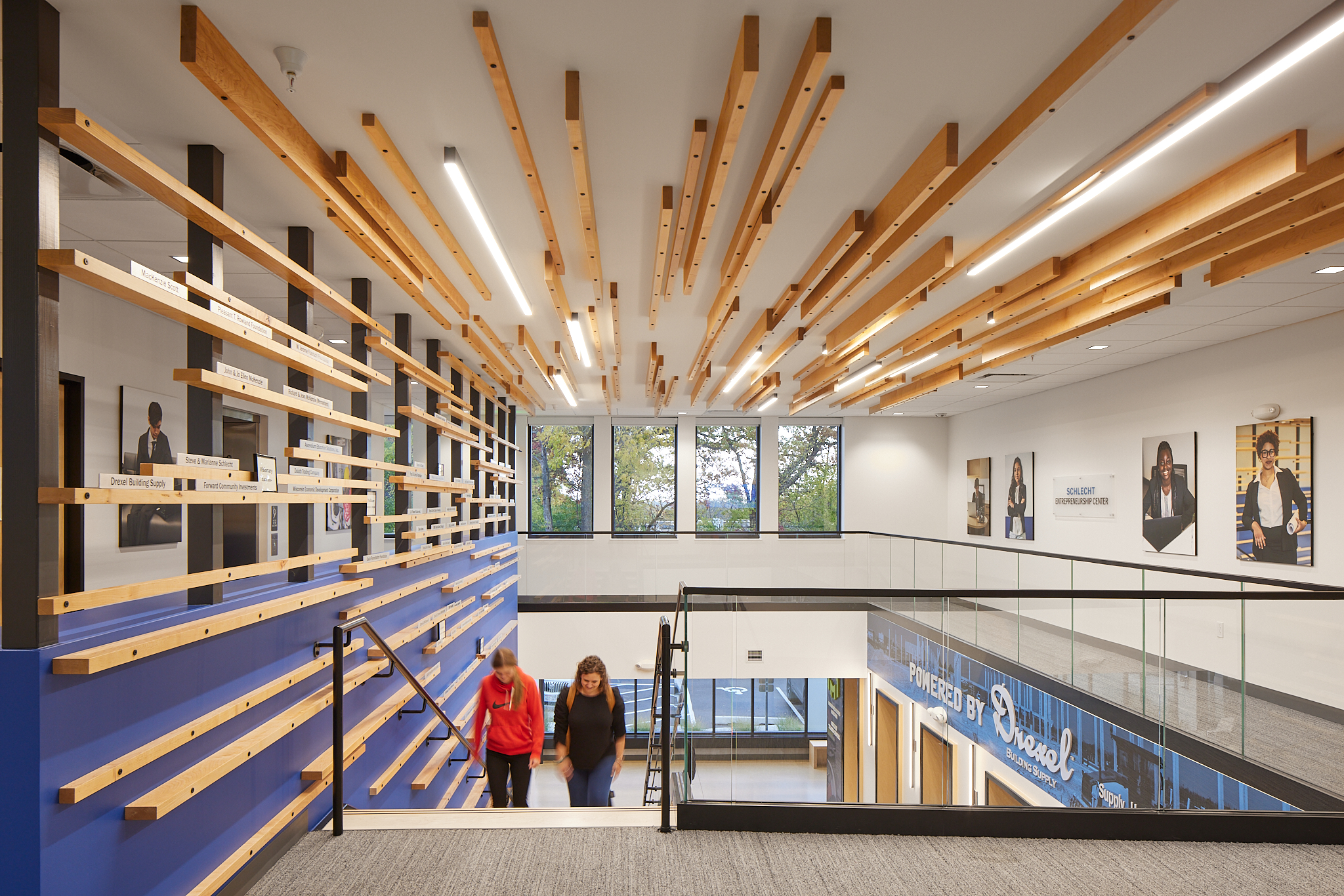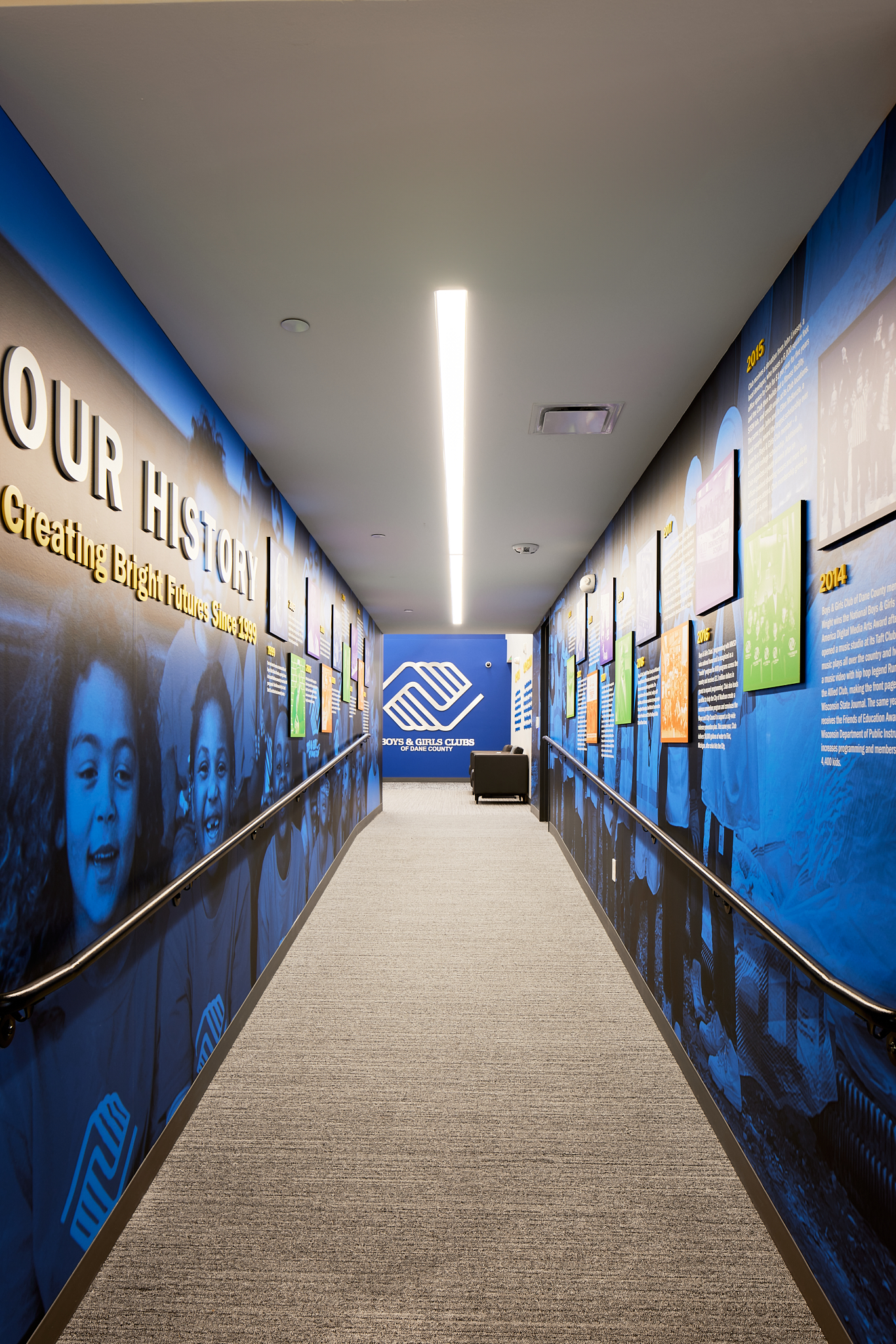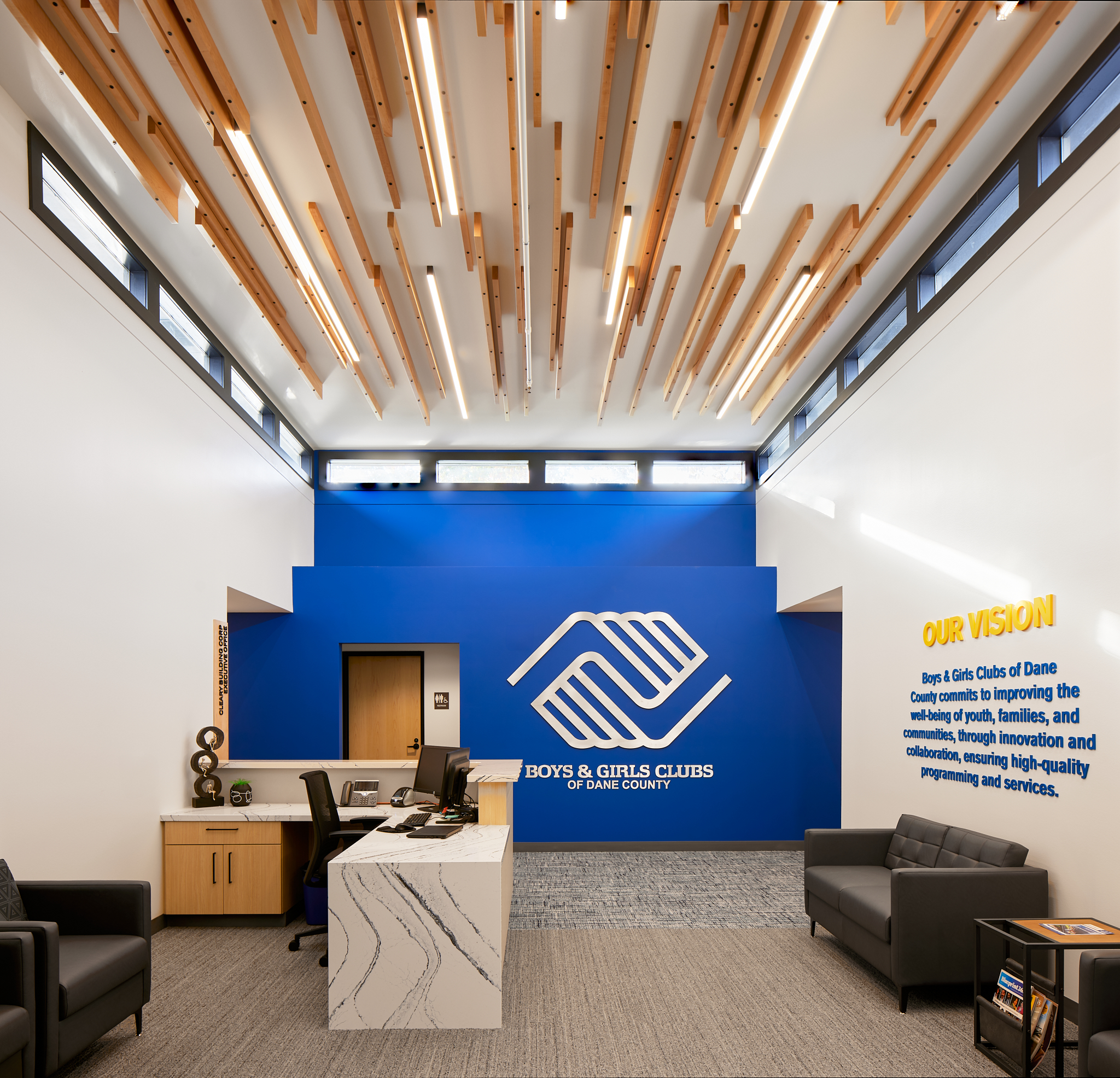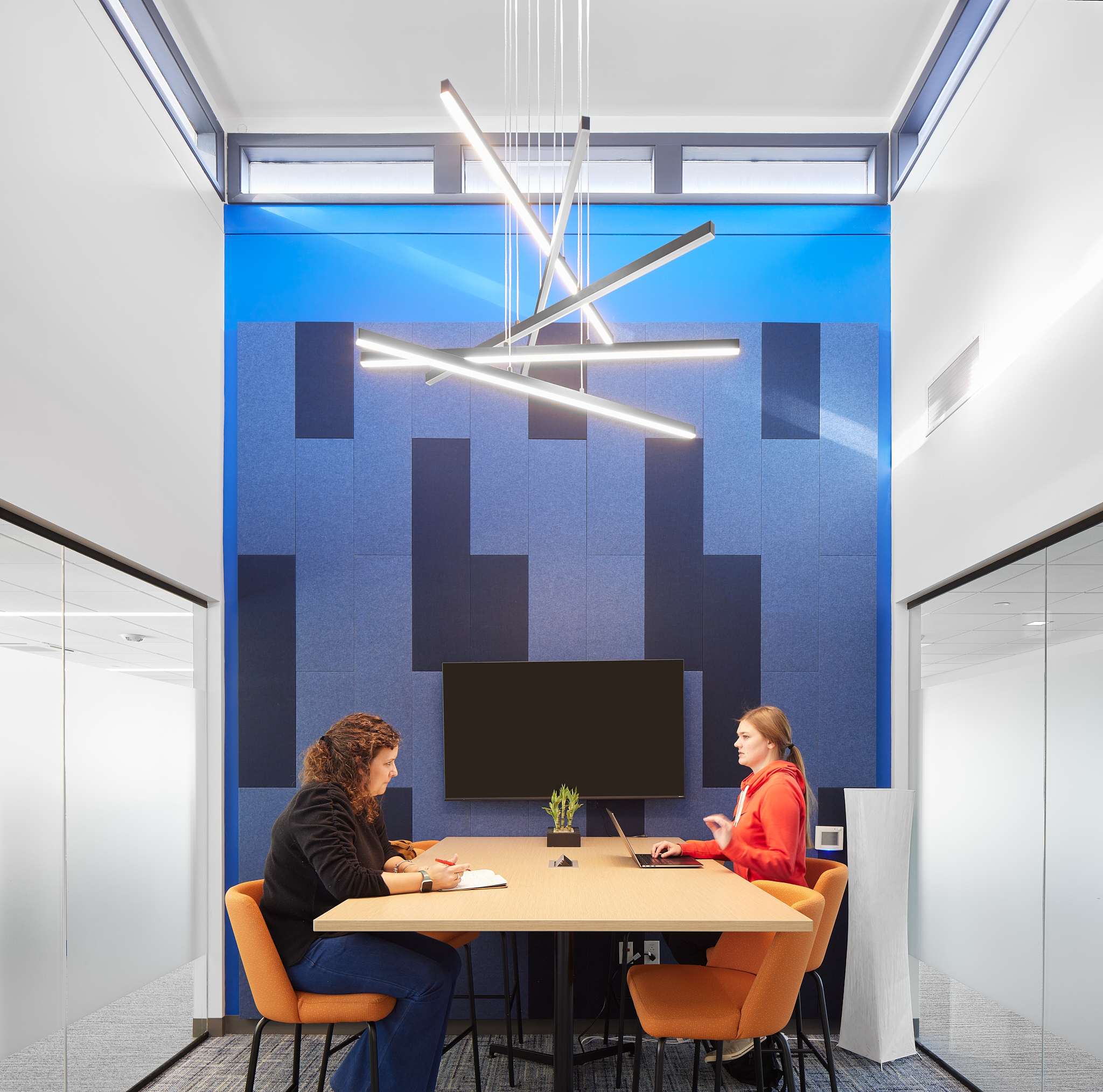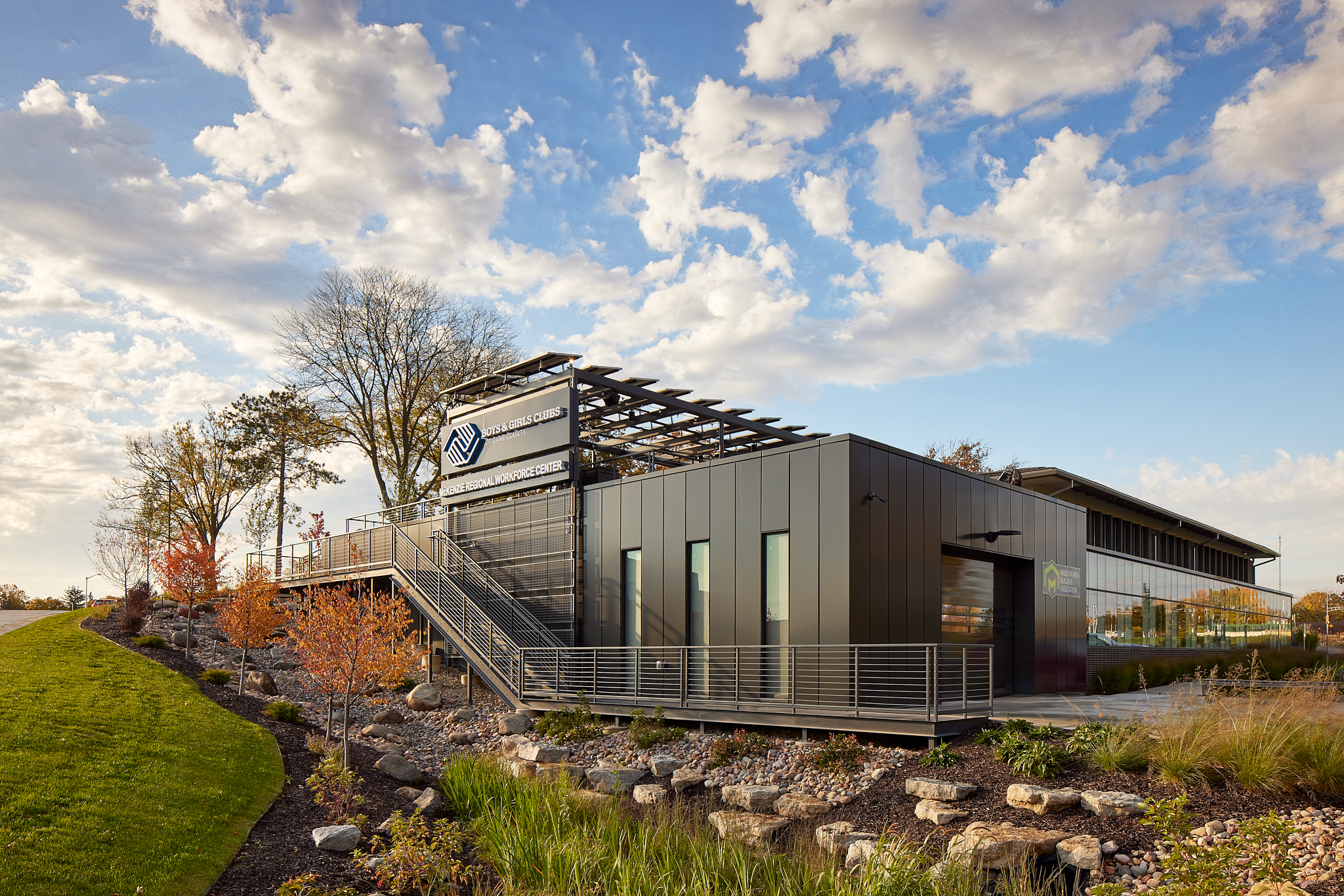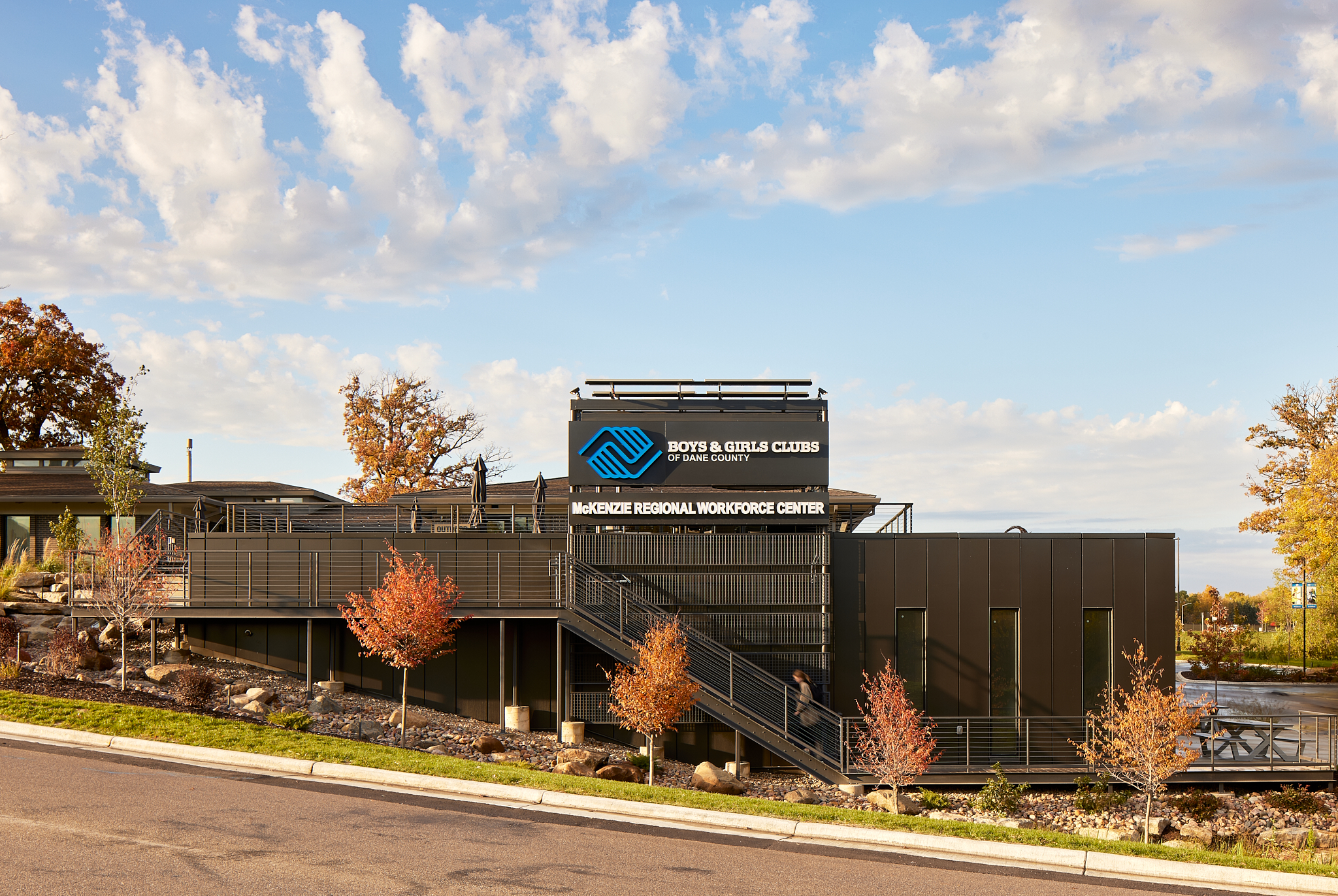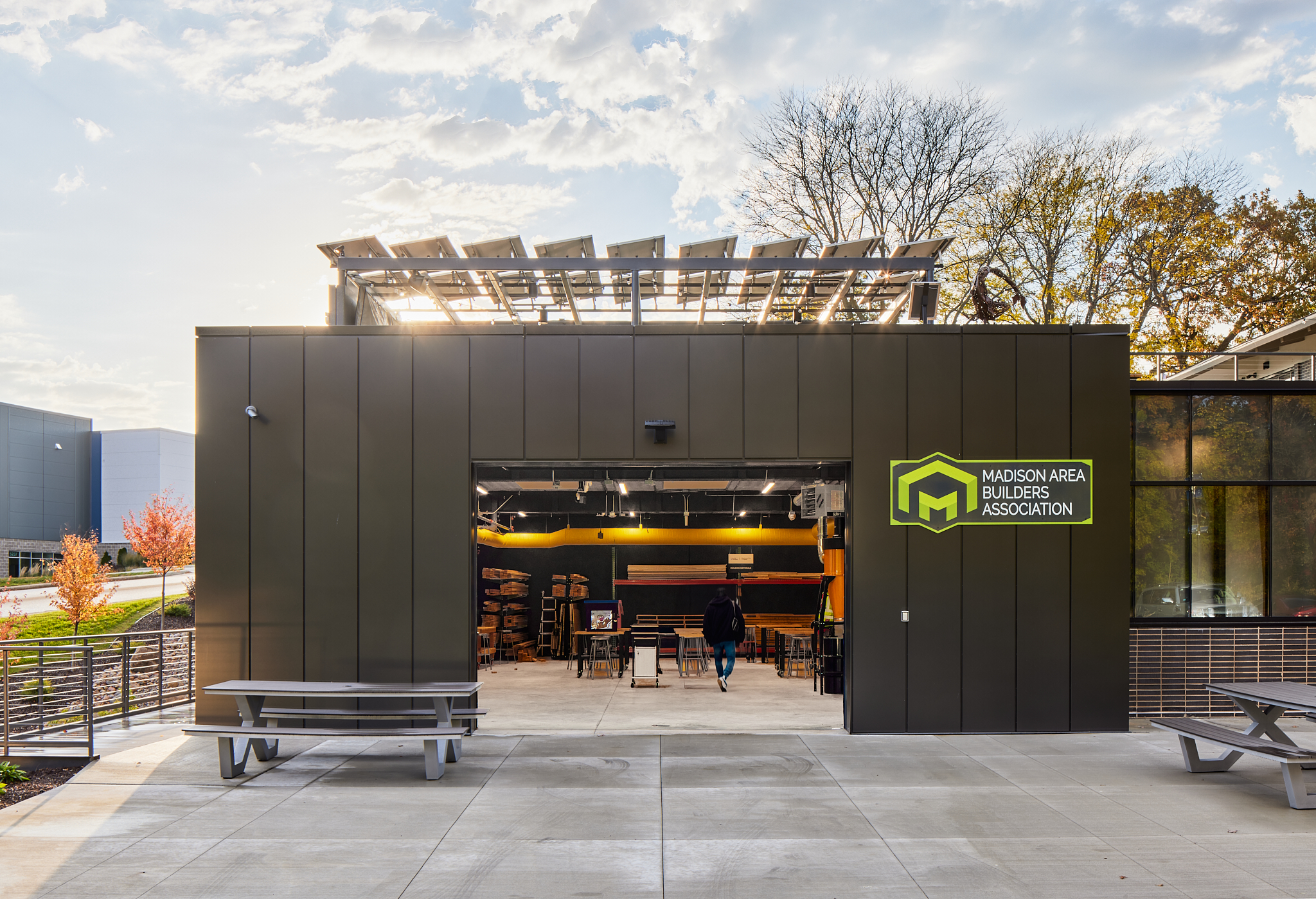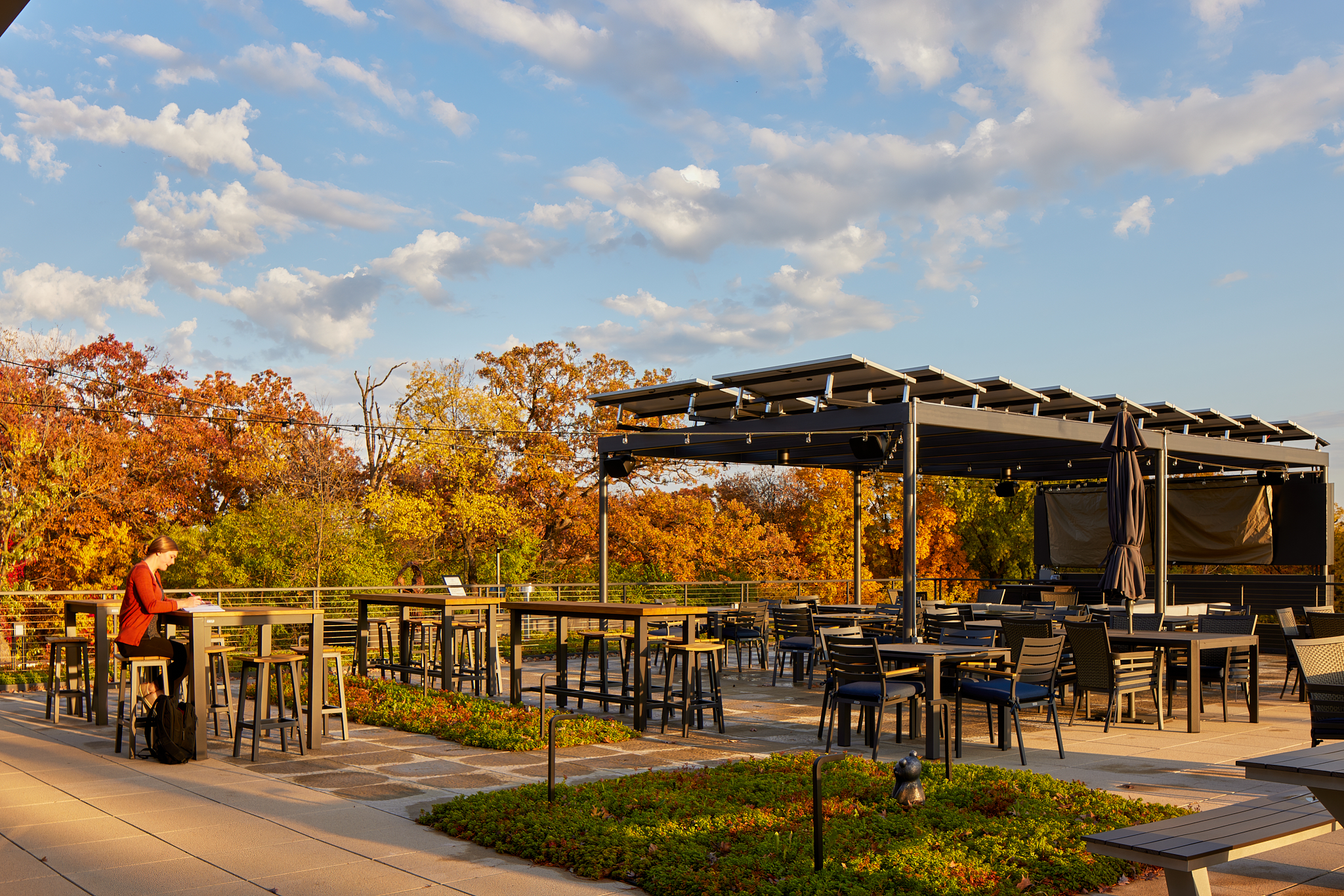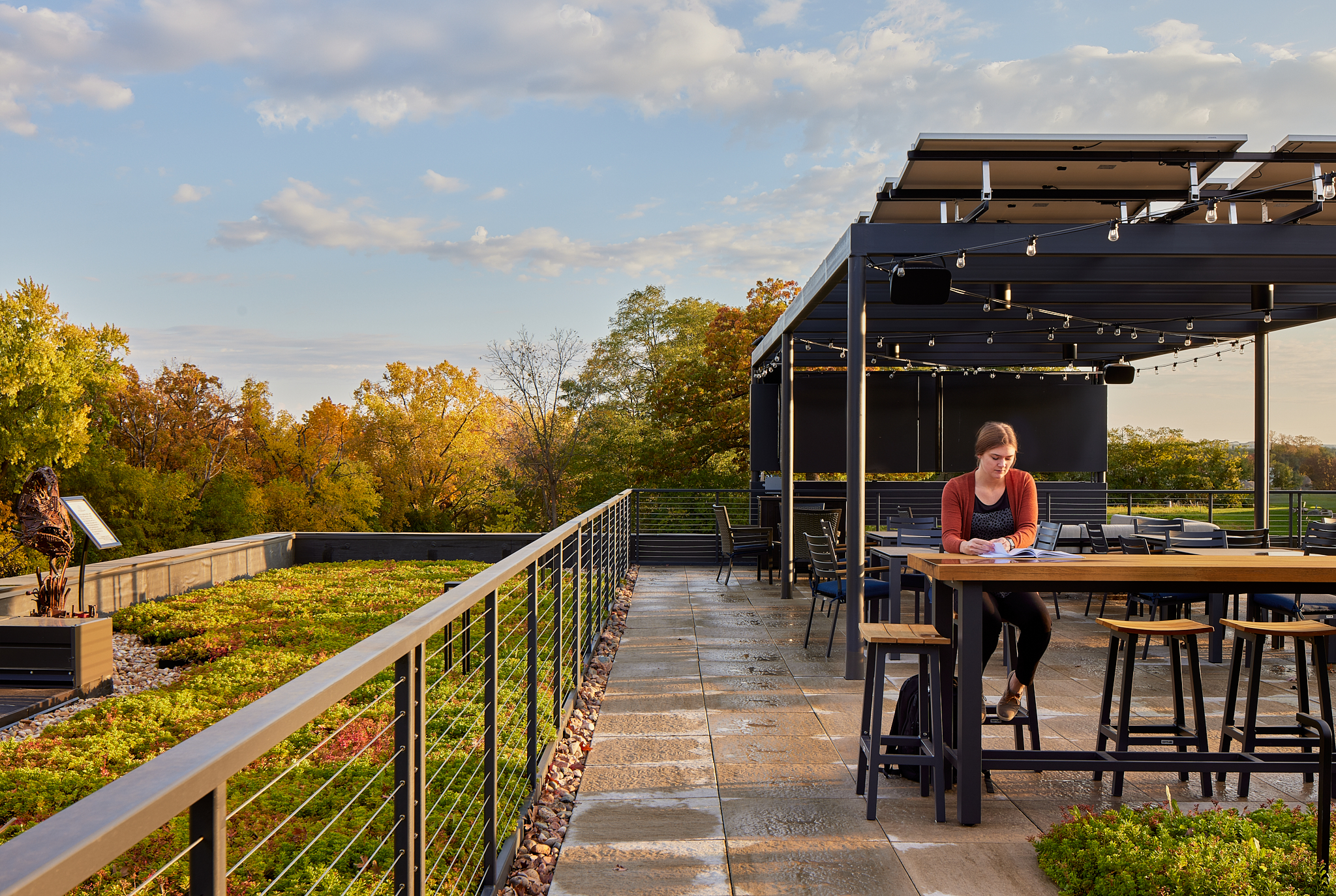McKenzie Regional Workforce Center

-
ClientBoys & Girls Clubs of Dane County
-
SQ. FT.20,000
-
Budget$6,000,000
-
Market
-
Year2023

- 2024 · International Interior Design Association, Wisconsin ChapterAward of Excellence, Learning
The McKenzie Regional Workforce Center is a partnership between the Madison Area Builders Association and the Boys & Girls Clubs of Dane County, in collaboration with multiple local businesses and school districts to develop new career pathways in trades for Dane County students.
The adaptive re-use of a former office building creates a collaborative environment to teach skilled trades with the goal of sparking an interest in vocations like plumbing and carpentry earlier in a student’s education, thus creating generational change in families and diversifying a historically white and male workforce. The project was focused on supporting disadvantaged contractors and vendors through construction and procurement. The team worked with suppliers and the contractor team to leverage discounts and on-going educational opportunities, while still promoting vendors of color and females. These partners are celebrated throughout the building.
Located in what was originally a split-level prairie-style office building, the transformation of the building included a single-story addition that wraps around the front and south of the building. The addition puts the skilled trades classrooms on display so all visitors and students will walk by the rooms with views to the activity within. Education, training, certification, apprenticeships, and job placement will be available to young adults in high school. Younger students will have the opportunity to explore career options and learn life skills.
The building showcases the construction trades being taught in the building throughout the construction of the new addition, using the building as a learning tool. The addition’s concrete and steel structure, ductwork, plumbing pipes, and electrical wiring are purposefully left exposed in areas where students are learning and socializing. The conference room off the lobby has a large window looking into the building’s mechanical room, a space that is typically tucked away.
Benches in the hallway outside the classrooms have exposed plywood edges so students can see the layered construction of plywood and are routed around columns to highlight, instead of hide, structural elements. In this same hallway, the design team made an existing three-foot-thick load bearing slanted wall work by tucking benches, as well as lockers and display monitors, along its face. Donor alcoves featuring intentionally prominent signage and displays, provided by the donors, are also integrated along the sloping wall.
This main artery, which is extra wide to encourage students to linger, also illustrates the use of Boys & Girls Clubs branding and color. The clubs signature blues and yellows are used to highlight the classroom entries. The windows are also used to feature the spaces, with alternating clear and frosted glass intentionally positioned to reveal the pops of color from the outside looking in. Similarly, color in the carpet is used to signify gathering spaces. Carpet tiles are grey except in collaboration and gathering areas, where blue carpet is used.
Throughout the building, the color contrasts with an otherwise neutral palette of white walls, maple wood panels with metal trim, and concrete. The exposed concrete structure ceilings are treated with acoustic panels to reduce echo. Durability of materials was a focus throughout, but particularly so in the shop areas where bright lighting and flexible furniture and equipment are paired with purposefully exposed ducts and pipes painted bright yellow.
Other learning spaces include the entrepreneurial center, a multi-purpose training room, which opens to outdoor learning spaces on a rooftop patio, where students can connect with nature and learn about the photovoltaic array that helps power the building. The patio and entrepreneurial center can also be rented to generate revenue for the center.
A donor wall at the building’s entry uses 2-by-4 studs, sanded and stained, arranged at random up the wall along the new staircase and spilling over onto the ceiling. This same ceiling treatment also appears in the administration area on the second level.
A new opening was cut into the structure to create a larger wood, steel, and glass stair, which leads to a history tunnel. The history tunnel is a ramped walkway that addresses existing floor levels, while leading visitors to the Boys & Girls Clubs administrative offices. All visitors to the administrative offices must pass through this tunnel, and are exposed to the history of the organization in Dane County. In order to get daylight penetration and exterior views, former hallways were enclosed into central conference rooms and the perimeter was opened with a mix of workspaces and offices with glass fronts.
